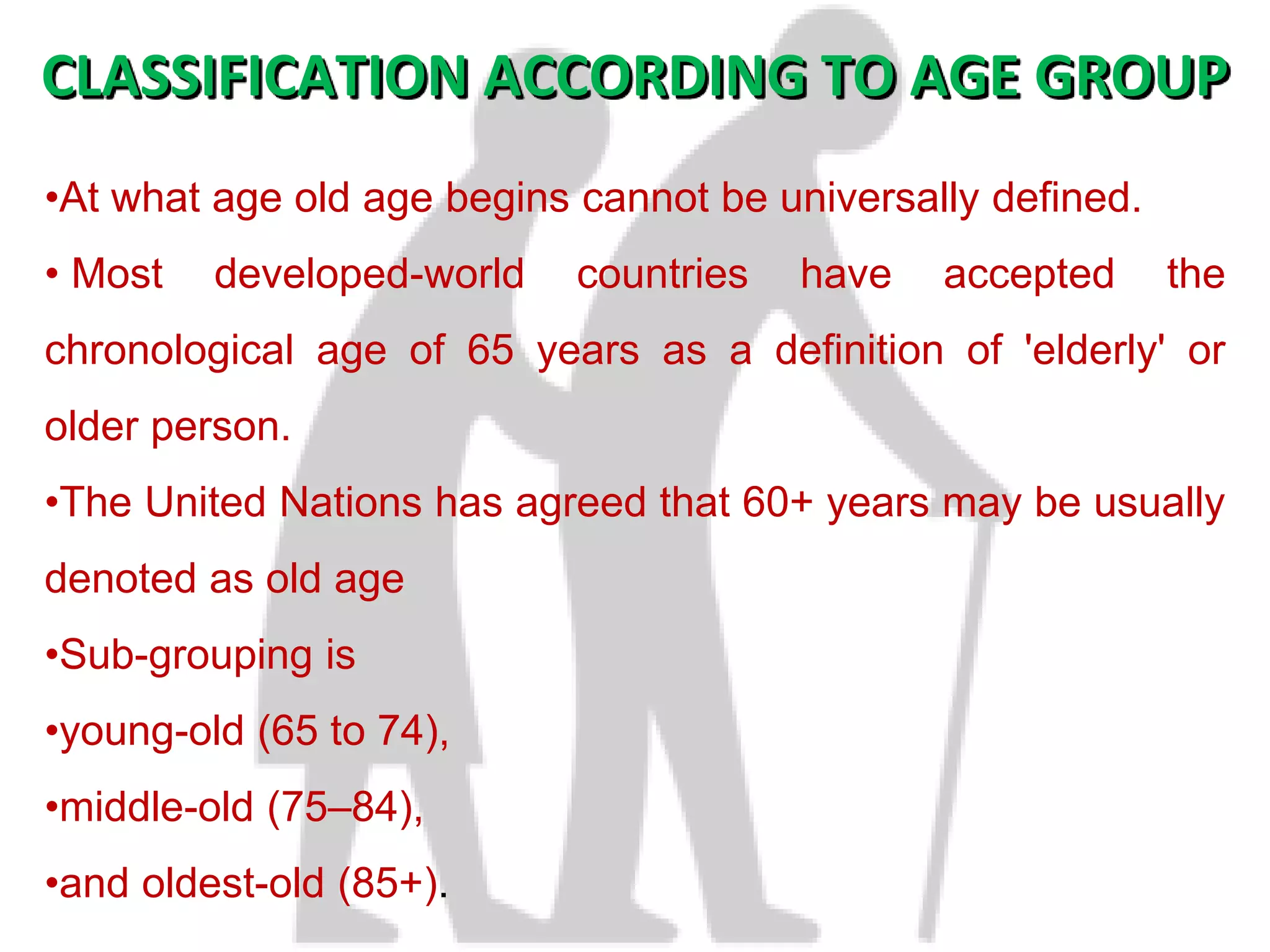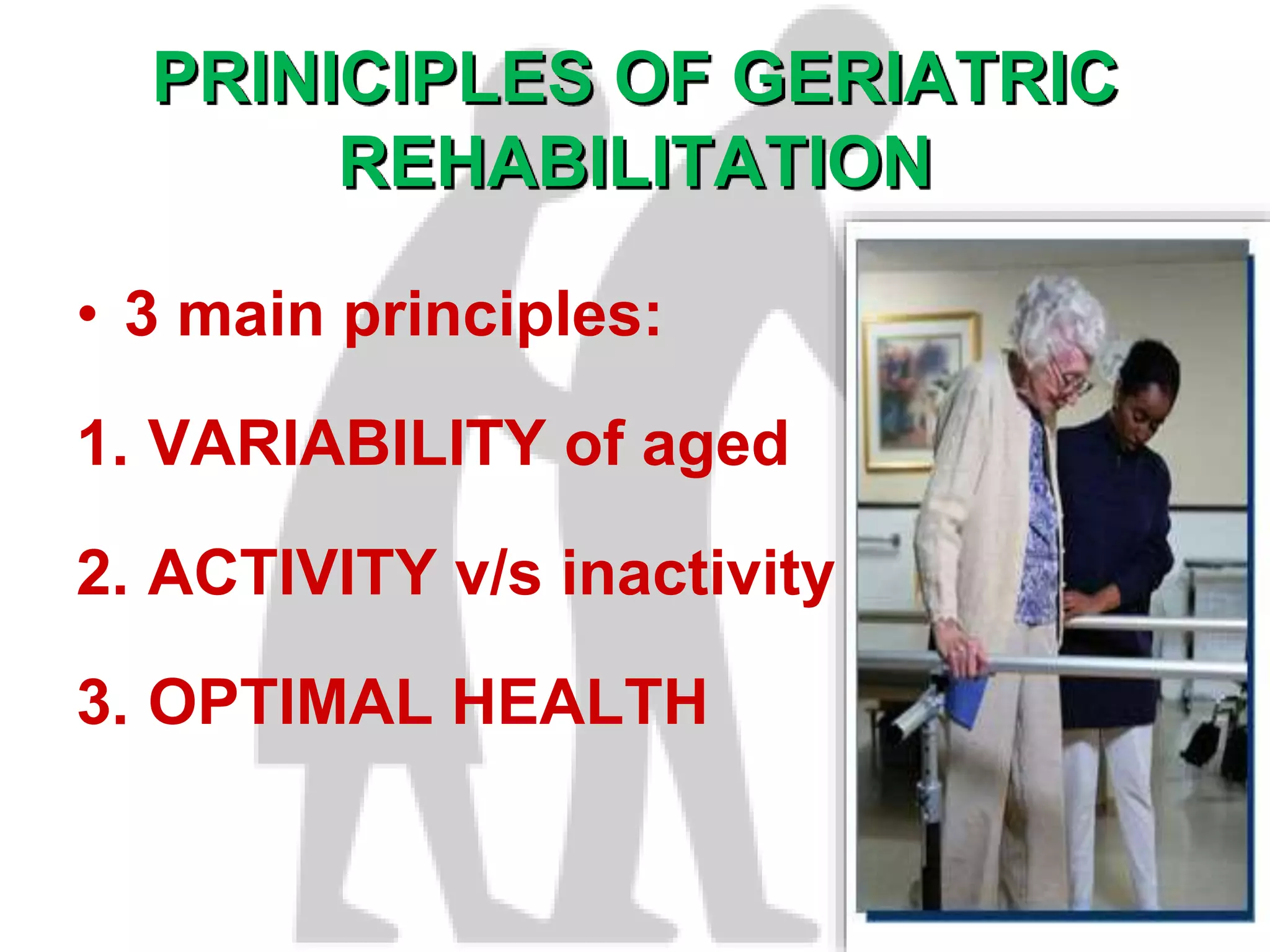1. Geriatric rehabilitation aims to help the elderly regain independence by recovering physical, psychological, or social skills lost due to aging or disability.
2. The key principles of geriatric rehab are addressing the variability in aging, preventing the effects of inactivity, and maintaining optimal health.
3. Interventions include a variety of exercises, assistive devices, and environmental adaptations delivered through different settings and providers.










































